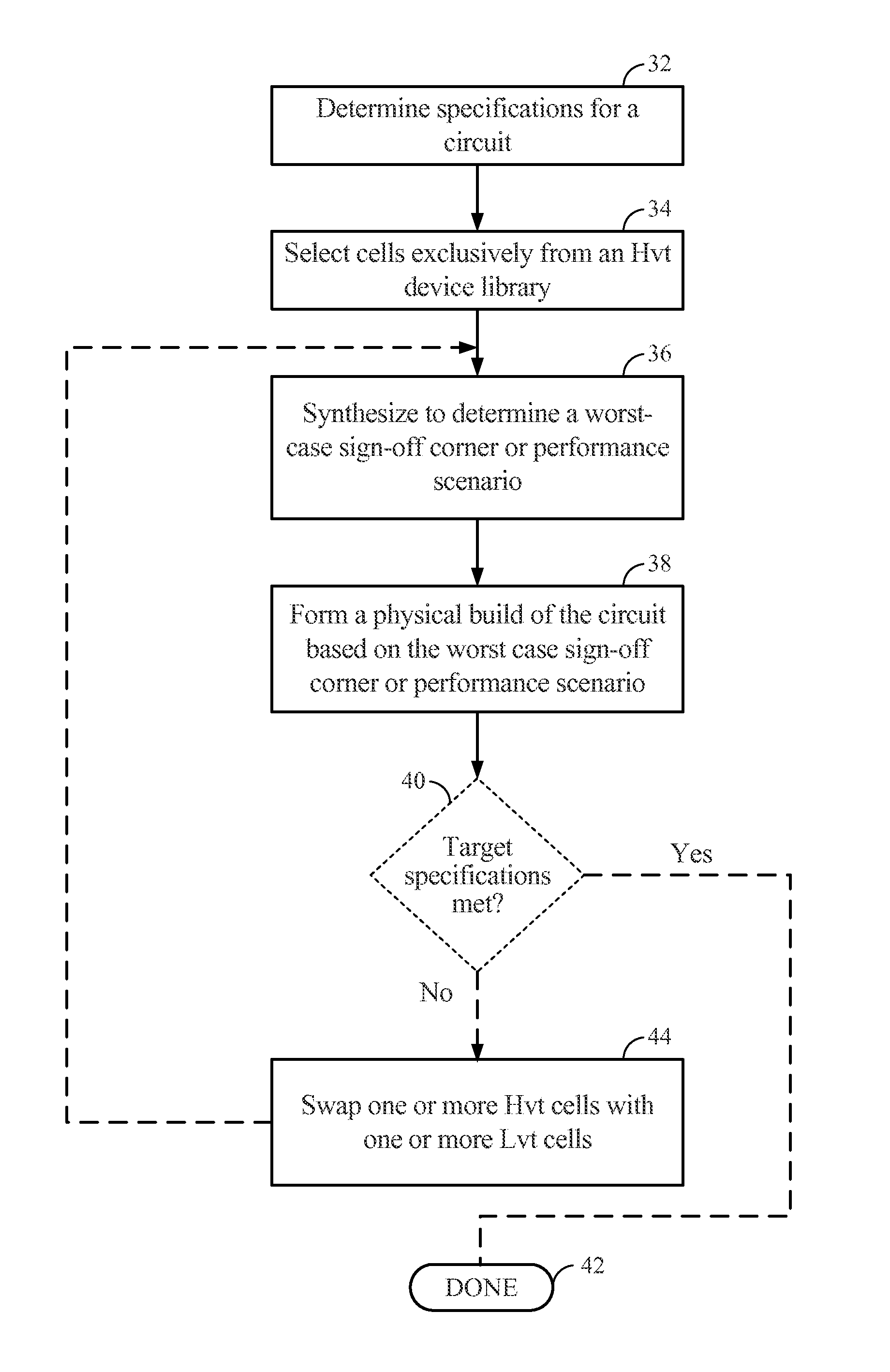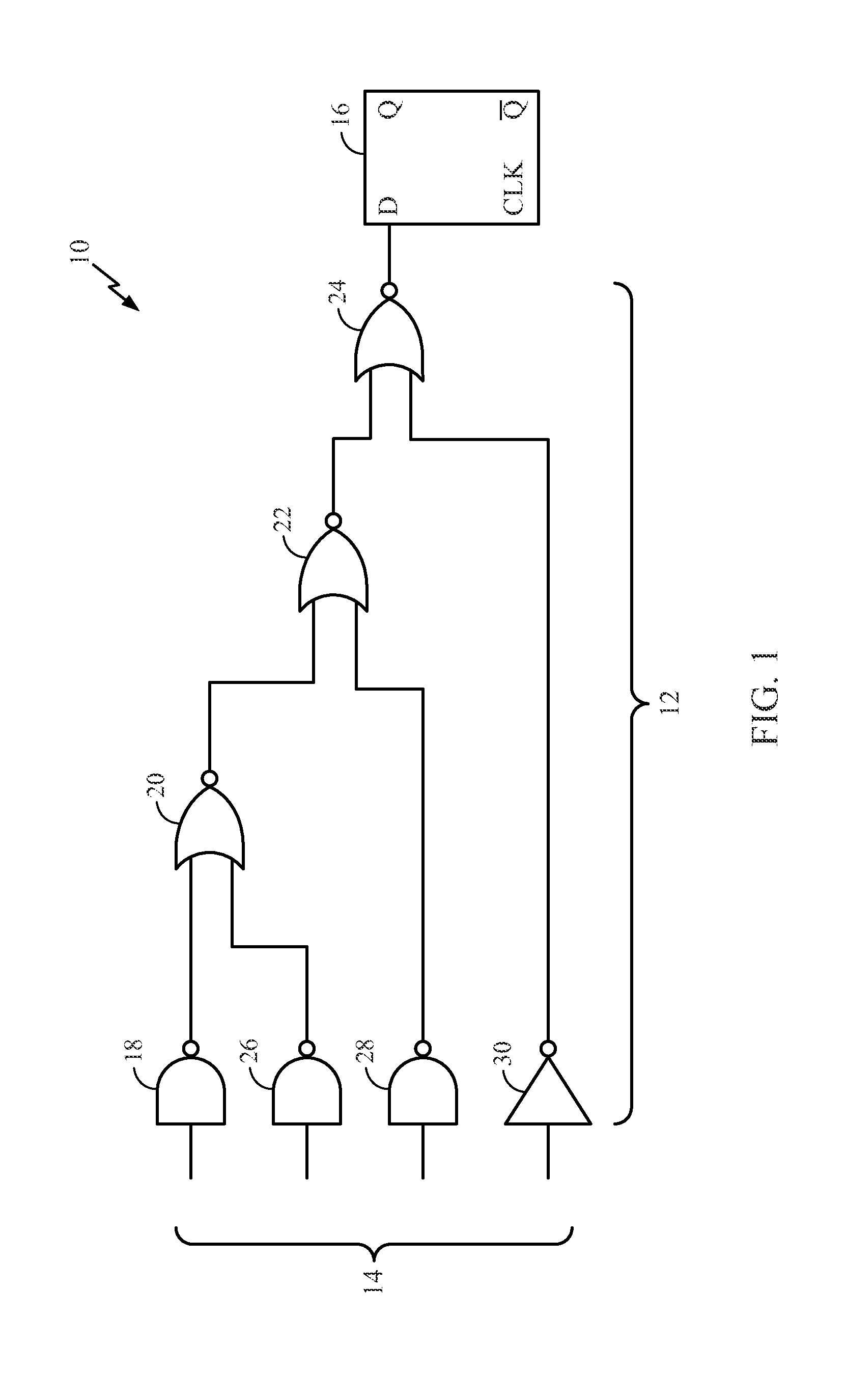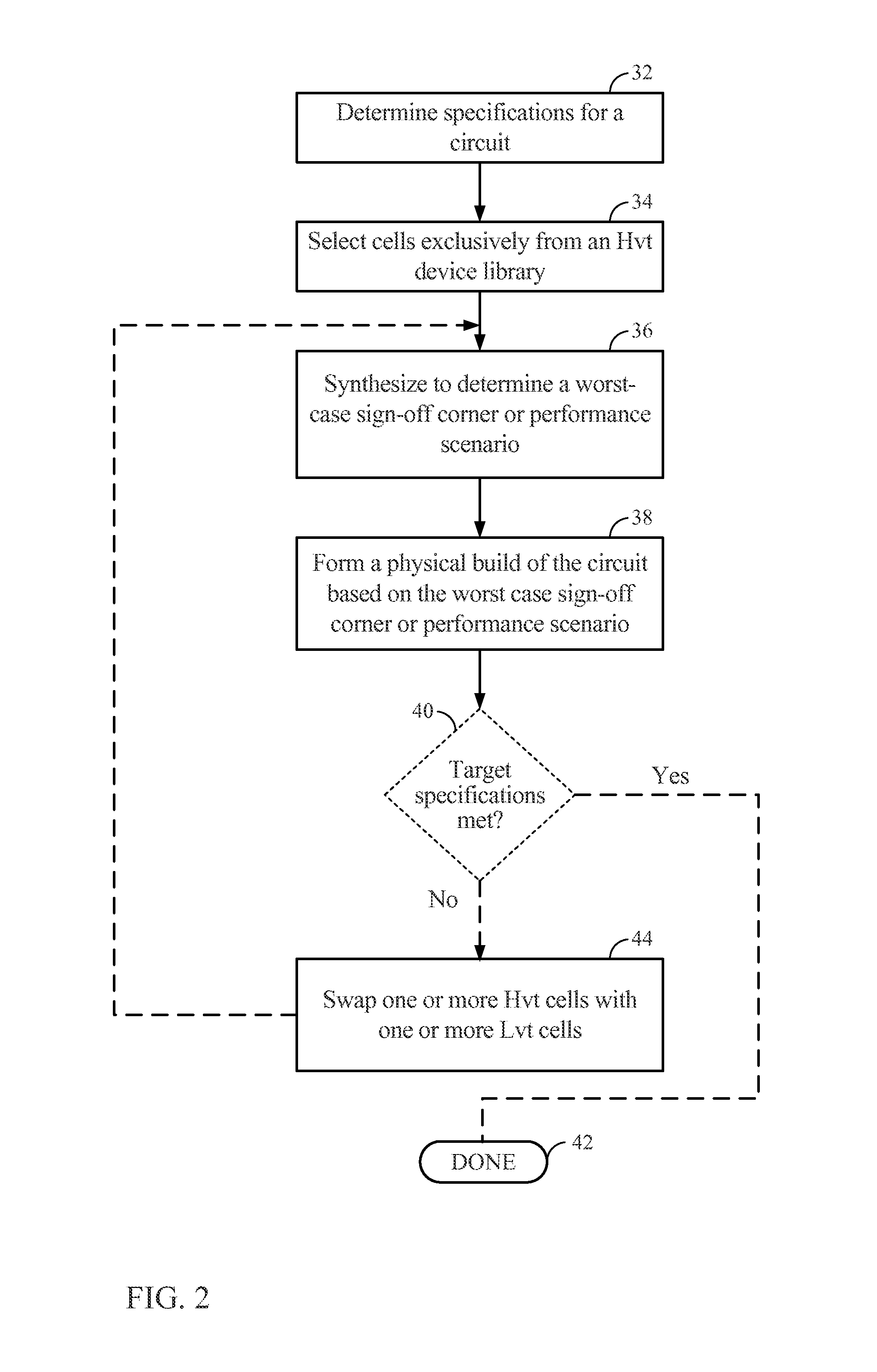Methods and circuits for optimizing performance and power consumption in a design and circuit employing lower threshold voltage (LVT) devices
a technology of low threshold voltage and optimization method, which is applied in the direction of electric variable regulation, process and machine control, instruments, etc., can solve the problems of increasing power consumption, achieve the effect of reducing total power consumption, increasing performance, and optimizing performance and power consumption
- Summary
- Abstract
- Description
- Claims
- Application Information
AI Technical Summary
Benefits of technology
Problems solved by technology
Method used
Image
Examples
Embodiment Construction
[0023]With reference now to the drawing figures, several exemplary embodiments of the present disclosure are described. The word “exemplary” is used herein to mean “serving as an example, instance, or illustration.” Any embodiment described herein as “exemplary” is not necessarily to be construed as preferred or advantageous over other embodiments.
[0024]Embodiments disclosed in the detailed description include methods and circuits for optimizing performance and power consumption in a circuit design and circuit employing lower threshold voltage (Vt) (“Lvt”) cells and devices. The circuit layout and circuit employ one or more Lvt cells. Lvt cells are employed to increase performance (i.e., speed) of the circuit. However, Lvt cells have higher current leakage profiles as compared to nominal Vt (Nvt) and higher Vt (Hvt) cells, which leads to increased power consumption. To receive the benefit of Lvt cell performance while reducing or minimizing the tradeoff of higher leakage current in ...
PUM
 Login to View More
Login to View More Abstract
Description
Claims
Application Information
 Login to View More
Login to View More - R&D
- Intellectual Property
- Life Sciences
- Materials
- Tech Scout
- Unparalleled Data Quality
- Higher Quality Content
- 60% Fewer Hallucinations
Browse by: Latest US Patents, China's latest patents, Technical Efficacy Thesaurus, Application Domain, Technology Topic, Popular Technical Reports.
© 2025 PatSnap. All rights reserved.Legal|Privacy policy|Modern Slavery Act Transparency Statement|Sitemap|About US| Contact US: help@patsnap.com



